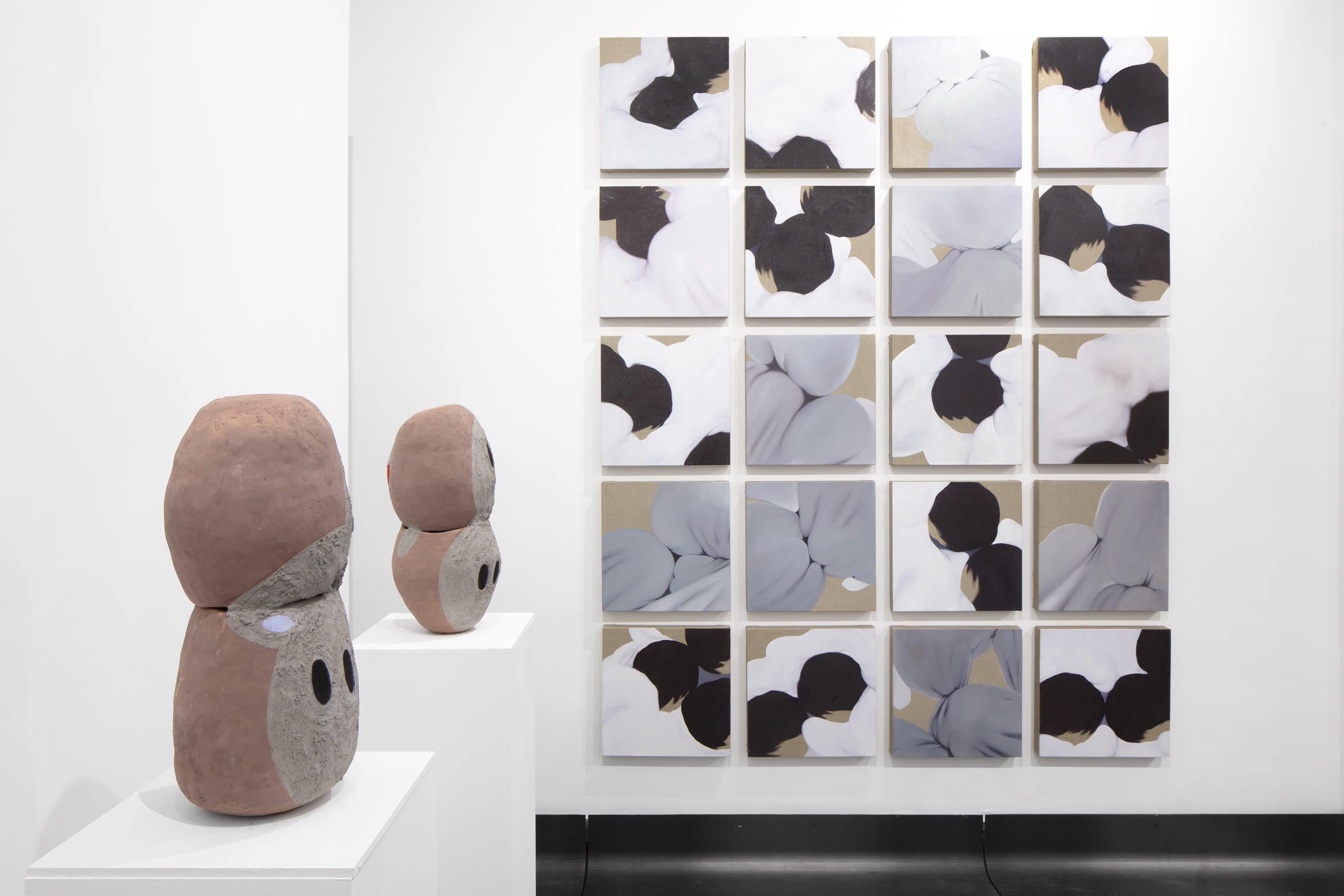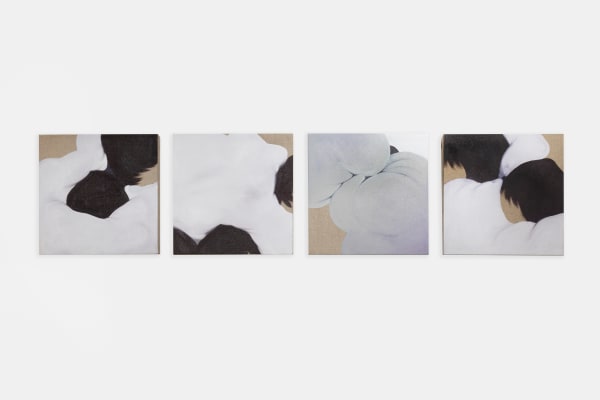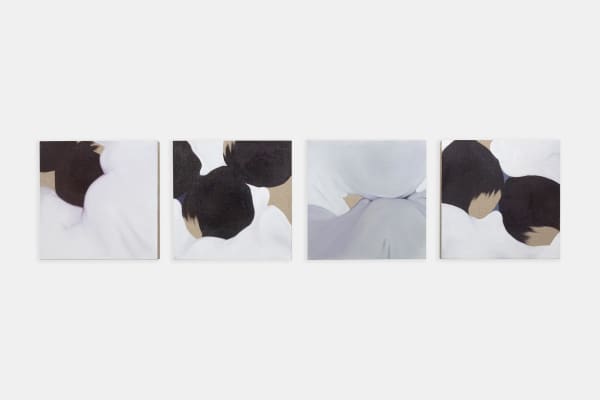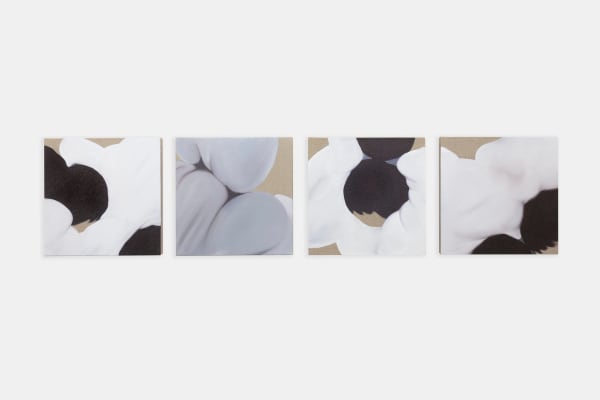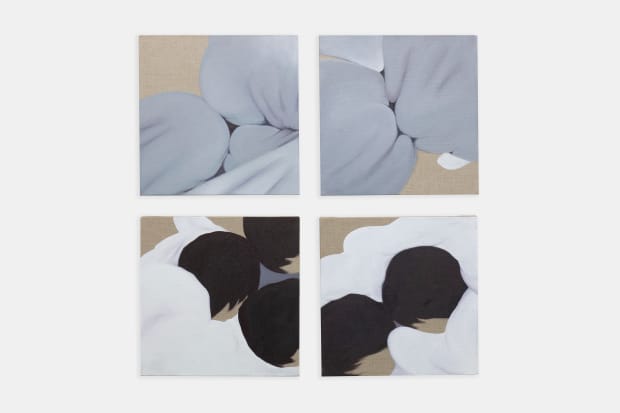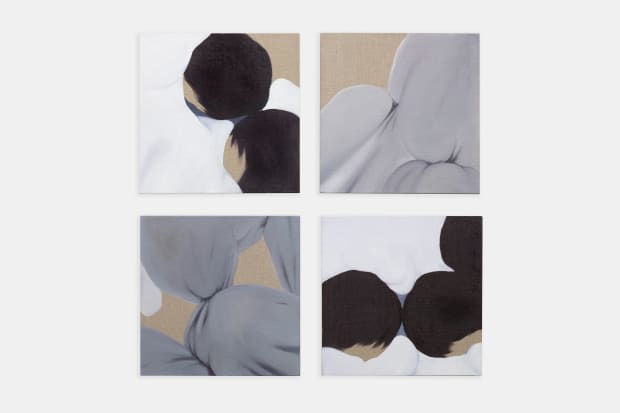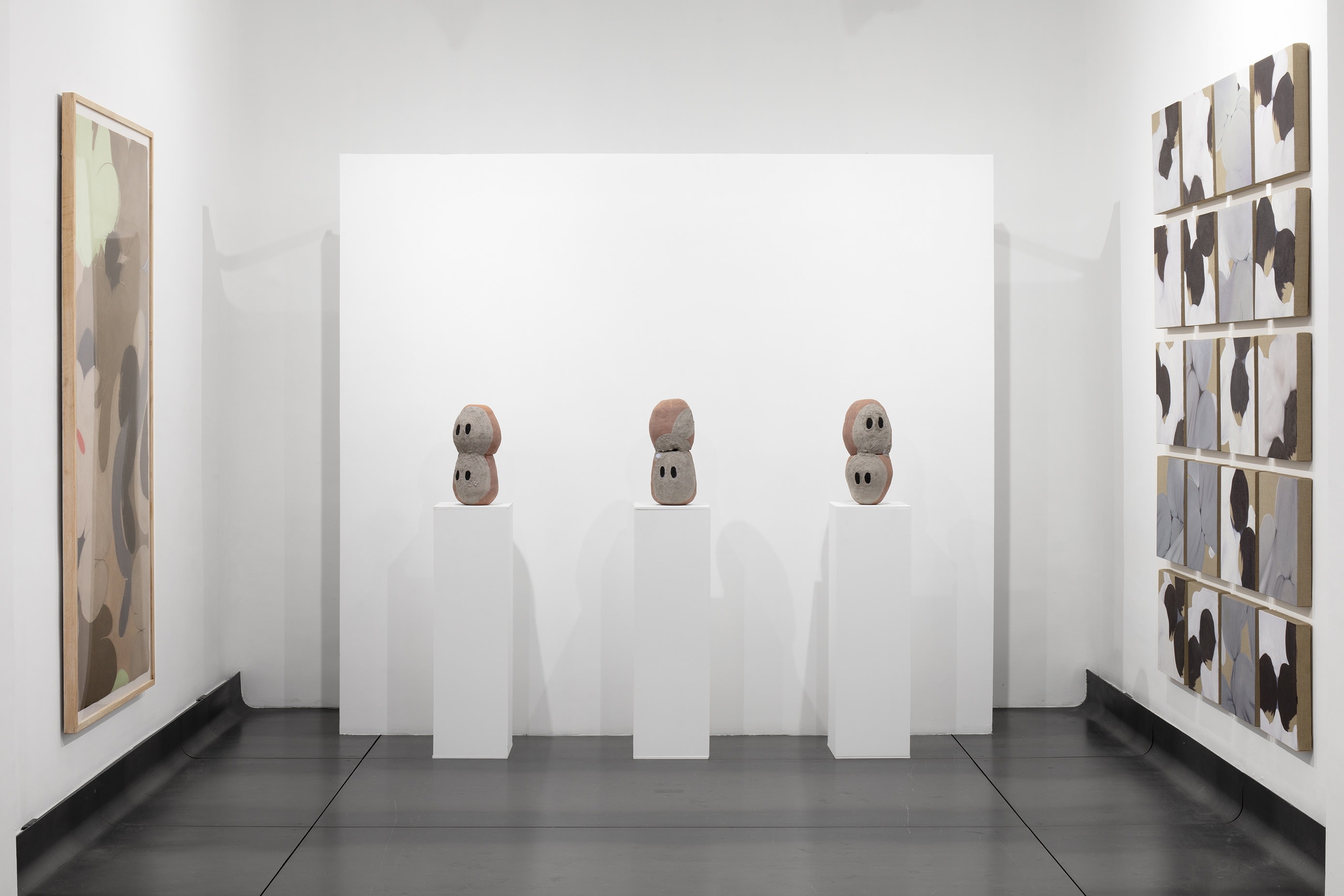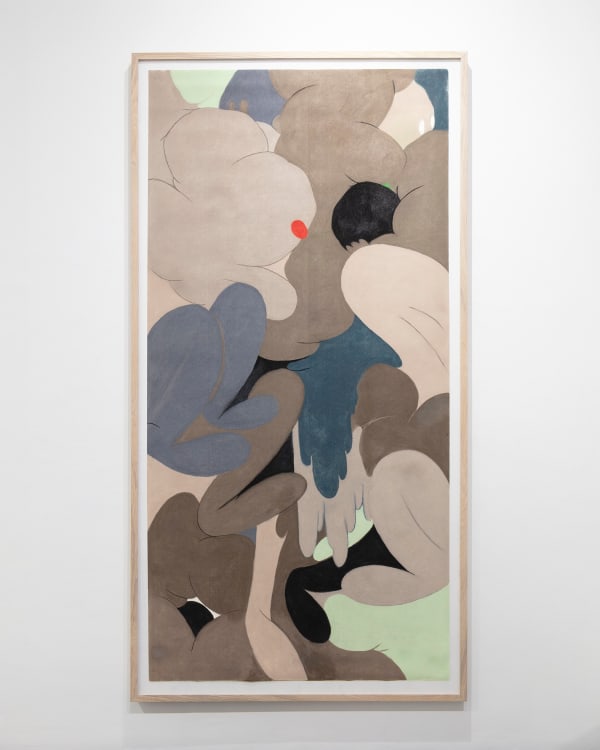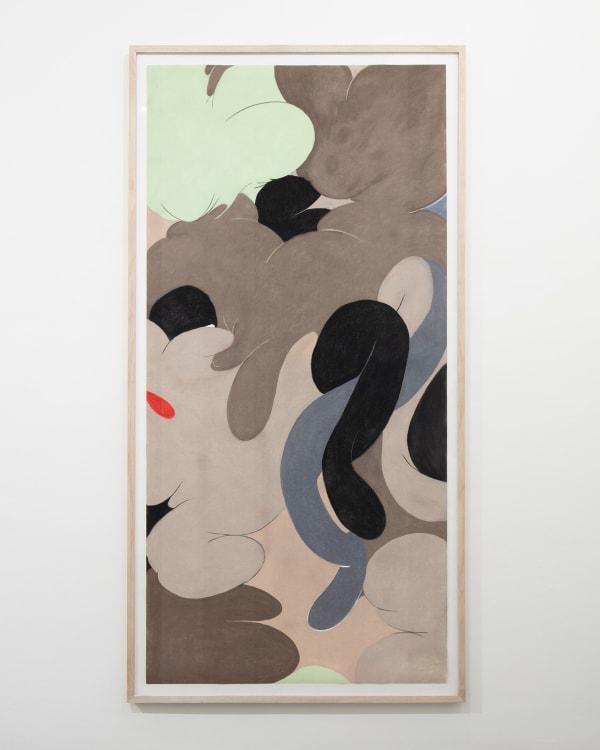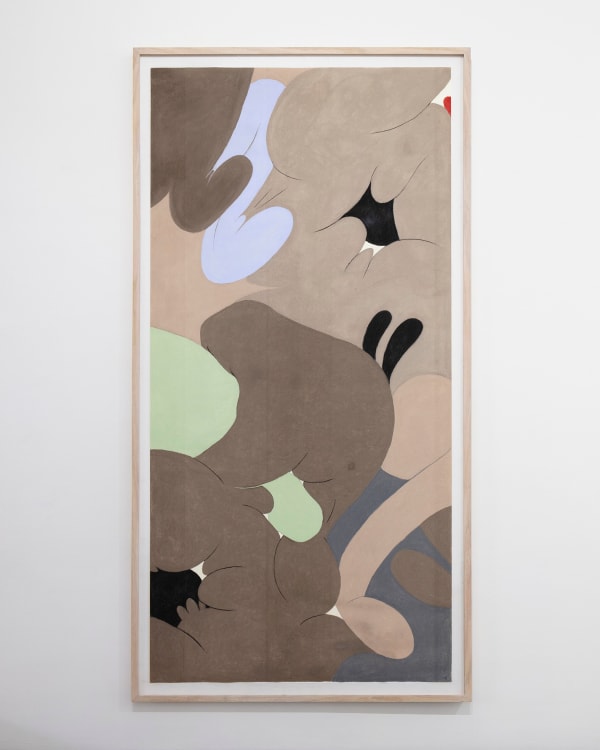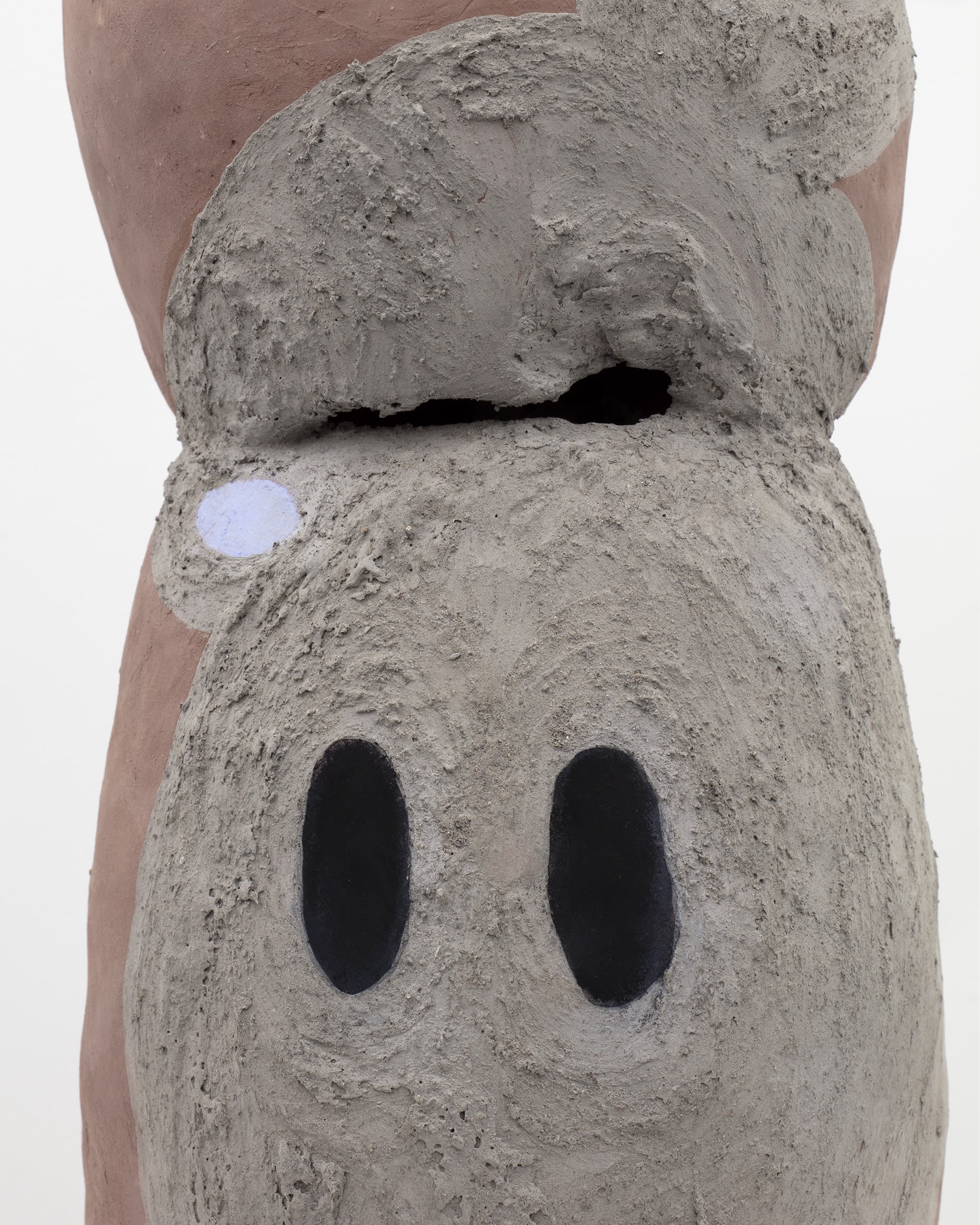Waking is still dreaming. That moment when faint reality is still tinted by the edges of sleep, and the familiar shapes of the room lose their contours in drowsiness, as if the desires of wakefulness yielded helplessly to dreaming. In that blurred instant, volume and background are indistinct. There is no language to separate them. It is an interstice so fragile that even memory lets it slip.
The figures that appear in the works gathered here can be imagined at that threshold between worlds. As they begin to gain definition, they also evade it, merging with another mass, and revealing themselves only in fleeting glimpses. In this imprecise moment, unfinished forms gather in a tenuous, almost imperceptibly vital motion. Through the quiet spell cast by her paintings, drawings, and sculptures, Waysatta offers in her first solo exhibition at Campeche, a deeply personal and long-brewing reflection on the complexities of collective organization—its tensions, its blurs, and the forces that shape it.
-
The exhibition is composed of multiple works that compose sequences in non-linear narratives. A series of 25 oil paintings on canvas—formatted in a way that recalls comic strips—gathers head-like lumps that become siamese in their intense proximity. In this way, the masses set in immersive scenes, gradually transform before us into collective bodies. Each painting brings several of them together, suggesting through these parts a community, as well as a unity of interchangeable fragments. The series of three large-scale drawings made with pastel on Japanese paper continues the convergence— this time through bodies sketched with a caricature-like gesture, without a face or head. In both sets, individual identity is suspended, yet the power of the bodies together—where the lines of one simultaneously define the other—creates the tension of the imagined space.
The sculptures series reveals a key reference that runs throughout the entire exhibition. It consists of ceramic vessels assembled through their openings with a mixture of ash and water as a binding agent, replicating the shape of clay containers used in meliponiculture. The artist has studied and lived alongside melipona bees, known for lacking a stinger as a defense mechanism and instead developing complex forms of organization that fulfill this regulatory function with the environment. Collective organization is their form of defense. Another essential element is ash, used in the architecture of these hives to connect the containers, seal them, and later allow them to be opened again for inspection. In the exhibition’s paintings and drawings, ashen gray connects and generates continuity between forms. In the sculptures, it is the substance that unites the vessels and constitutes the ink for the drawings on their surface. Thus, it is the union that forms the drawing. Across all the works, ash is a nourishing substance that evokes memory and integrates it into a shared present. In the artist’s words, the meliponas show us how sometimes “an entire construction is made to honor a single point of contact”, resistant in its fragility.
-
Several aspects of the imaginary present in these works stem from her experience as a member of various artistic collectives over the past 15 years, including Cráter Invertido. From that shared space come learnings such as the making of comics, the need to narrate through the repetition of patterns, collaborative drawing as a way of documenting common imaginaries, and the exploration of ambiguity in characters that become both setting and landscape.
Thus, a space for digesting the collective can be found in these works as a continuation of that way of working—through another path. One that no longer focuses solely on building the everyday of the common, but instead explores, as both subject and material, the relationship between fragment and whole. It is a meditation on the breathing dynamics in community. An inhalation that is collected in the unity of a person, and an exhalation that by expanding, amalgamates particularities previously scattered. In this way, the artist delves into that “mass” that unites (us) and gives shape to the intensity of bonds. Perhaps in the disidentification of the parts lies the possibility of our cohesion. Perhaps the enigma of desire—the one that brings fragments together in exceptional and powerful moments of life—resides in finding the ash that binds, and using its memory to reimagine points of contact, even without language, in the blurred limits of awakening.
– Roselin Rodríguez Espinosa
-

-

-
Vista de exposición: Waysatta Fernández, Donde reposa la ceniza, Campeche, Ciudad de México, 2025Cortesía de la artista y Campeche, Ciudad de MéxicoFotografía por Ramiro Chaves

